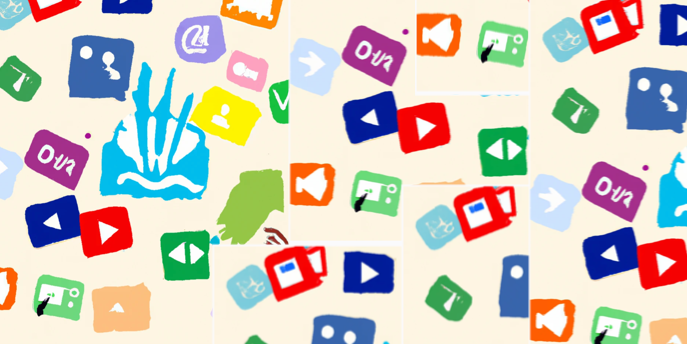This blog post is still a work in progress, please check back later for more updates.

I was talking to our marketing team at Sequoia, one of the things they do is to look at podcasts or talks we record then extract
- Key momnents
- Quotable quotes
- Blog posts
But what else?
For that we utilise many SaaS tools to transcribe, then read through those and the convert them to appropriate format. This is very time consuming process, and I was thinking if we can automate this process. Come to think of it, if we break it down to smaller steps, it is pretty straight forward. Also with help of AI or LLM models we can actually do a better job when we keep humans in the loop. In this case AI can act as a first pass, and then humans can review and correct the output.
I know that there are a lot of tools out there to help, I wanted to see if we can do it locally using open source tools.
Some of the basic tasks we can perform are:
- Extract audio from video
- Transcribe audio to text
- Extract key moments
- Extract quotable quotes
- Generate blog post
- Generate social media posts
- Generate video snippets
- Generate audio snippets
- Generate images
- Create subtitles
- Translate and provide subtitles in different languages
- Extract SEO tags
- Extract SEO keywords
- Extract SEO descriptions
- … and so on!
The possibilities are endless, So lets get started with following tasks
- Extract audio from video (Use ffmpeg)
- Transcribe audio to text with Diarization (Speaker identification) so that we know who spoke when
- Then provide that audio snippets to Whisper
- Match the audio segments to text segments and tag them with speaker names.
- Generate combined transcript, and provide it to ChatGPT
- And ask ChatGPT to generate a blog post from the transcript.
And we are done! We have a blog post from a talk or podcast. Now to real work and some code.
The code for this is available at ajeygore/Video2Blog at Github
Packages and Software
- ffmpeg - Extract audio from video
- PyTorch - Deep Learning Framework
- PyDub - Audio manipulation
- hmmlearn - Hidden Markov Models in Python
- imagemagick - Image manipulation
- soundfile - Read and write sound files
- libsndfile - C library for reading and writing sound files
- whisper - Speech recognition/transcription model
- Chat GPT4 - GPT4 based chatbot
- Anaconda - Python distribution
- Pyannote - Speaker Diarization
Installing various packages
To install pytorch, please read details on my Running PyTorch on M1/M2 Mac blog post.
But for now following code snippets should do the trick.
#Install dependencies
brew install ffmpeg
brew install imagemagick
brew install libsndfile
#Create conda environment
conda create -n video2blog python=3.8
conda activate video2blog
#Install packages
conda install hmmlearn
pip install pydub
#Install pytorch
conda install pytorch-nightly::pytorch torchvision torchaudio -c pytorch-
#Install pyannote (This version has latest patches to run on ARM chipsets
pip install -qq https://github.com/pyannote/pyannote-audio/archive/develop.zip
#And export DYLD_LIBRARY_PATH so that on ARM we pick up libraries from /opt/homebrew/lib
export DYLD_LIBRARY_PATH="/opt/homebrew/lib:$DYLD_LIBRARY_PATH"
Extract audio from video
ffmpeg -i video.mp4 -acodec pcm_s16le -ac 1 -ar 16000 out.wav
Use Pyannote for diarization
pipeline = Pipeline.from_pretrained('pyannote/speaker-diarization',
use_auth_token="<Your Hugging Face Authortization Token>")
audio_input_file = {'uri': 'blabal', 'audio': './out.wav'}
dz = pipeline(audio_input_file)
with open("diarization.txt", "w") as text_file:
text_file.write(str(dz))
Create individual speaker segments
Second step is to create individual speaker segments, so that we can pass them to Whisper model.
References
I have used code from various palces, but here is incomplete list of the articles I went through.
- Article for speaker diarization
- Whisper
- Diarization
- https://blog.ml6.eu/who-spoke-when-choosing-the-right-speaker-diarization-tool-3d7a115c524b
- https://www.ml6.eu/knowhow/who-spoke-when-choosing-the-right-speaker-diarization-tool
- https://speechbrain.github.io/tutorial_basics.html
- https://github.com/speechbrain/speechbrain/discussions/1651
- Colab https://colab.research.google.com/drive/12bg3aUdr9mTfOGqcB5pSMABoIKPgiwcM?usp=sharing
- https://medium.com/saarthi-ai/who-spoke-when-build-your-own-speaker-diarization-module-from-scratch-e7d725ee279
- https://docs.openvino.ai/latest/notebooks/212-pyannote-speaker-diarization-with-output.html
- https://medium.com/analytics-vidhya/speaker-diarisation-89c963fa4fe8\
- https://github.com/rvipandey/SpeakerDiarisation/blob/main/SpeakerDiarization.ipynb